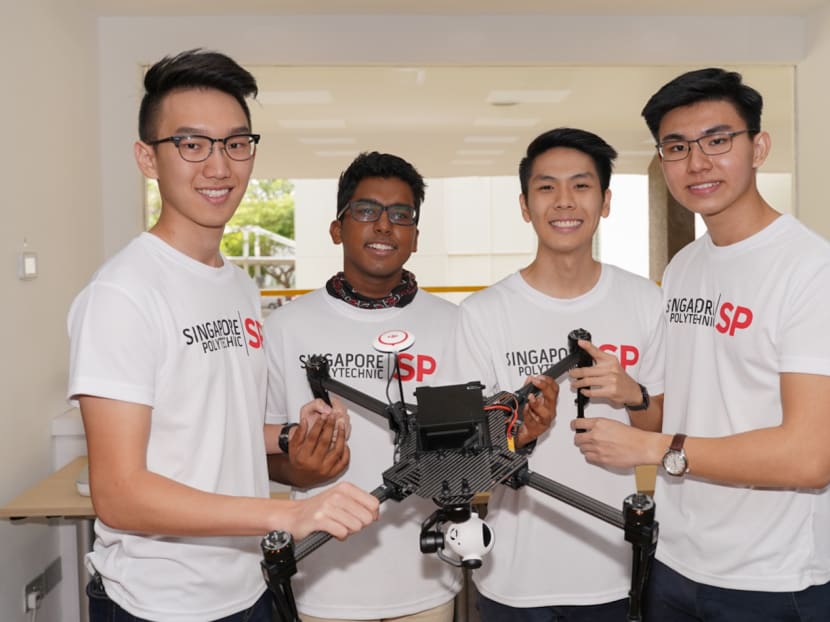Singapore’s first ‘live’ 5G facility opens, with novel applications to follow
SINGAPORE — Since January last year, final-year student Lee Jun Hao from Singapore Polytechnic’s School of Electrical Engineering and his peers have been developing a network of all-terrain drones that are able to track intruders autonomously — outdoors, indoors and even underwater.

(Left to right) Singapore Polytechnic students Chung Zhuo Han, Arjun Vijay, Brandon Tan Min Ren and Lee Jun Hao with one of their 'SP Secure' drones.
SINGAPORE — Since January last year, final-year student Lee Jun Hao from Singapore Polytechnic’s School of Electrical Engineering and his peers have been developing a network of all-terrain drones that are able to track intruders autonomously — outdoors, indoors and even underwater.
The students envision that security personnel will be able to monitor and react to a real-time stream of such intruders with an ultra-fast 5G cellular network.
This 5G network will now be made available to them as they continue to develop the drones at Singapore’s first “live” 5G facility, which was opened by the polytechnic, telecommunications company Singtel and telecom equipment maker Ericsson on Thursday (Jan 17).
The facility, located at Ayer Rajah and named 5G Garage, is connected to Singtel’s latest pilot 5G network, which runs on a trial spectrum granted by the Info-communications Media Development Authority (IMDA).
The facility will serve as a training centre, test bed and ideation lab to develop and foster adoption of 5G by enterprises in Singapore.
As part of the initiative, 250 final-year students from the electrical and electronic engineering diploma course and the computer engineering diploma course will learn and apply 5G wireless technology in their studies.
With the ultra-fast speeds and low latency rates, innovations such as the network of drones stand to benefit. Mr Lee, 19, said that their working prototypes now rely on a 300g onboard chip and have a flight time of 25 minutes.
“With the incorporation of 5G technology, more of the processing needed can be done in the cloud. This will reduce the weight of the chip by 65 per cent and extend flight time by 35 per cent,” he said.
“Ultimately, we want to develop a system where the drones will autonomously track a trespassing intruder once he or she sets off the intruder alarm, and equip security personnel with a visual edge,” he added.
Speaking at the opening of 5G Garage, IMDA's chief executive officer Tan Kiat How said that innovations such as autonomous vehicles will only be a reality if they can reliably send and receive data in split seconds on a 5G network. “5G will be an important part of Singapore’s future digital infrastructure,” he noted.
Singtel, Ericsson and Singapore Polytechnic signed a further agreement at the opening, committing to develop and build the 5G ecosystem in Singapore.






